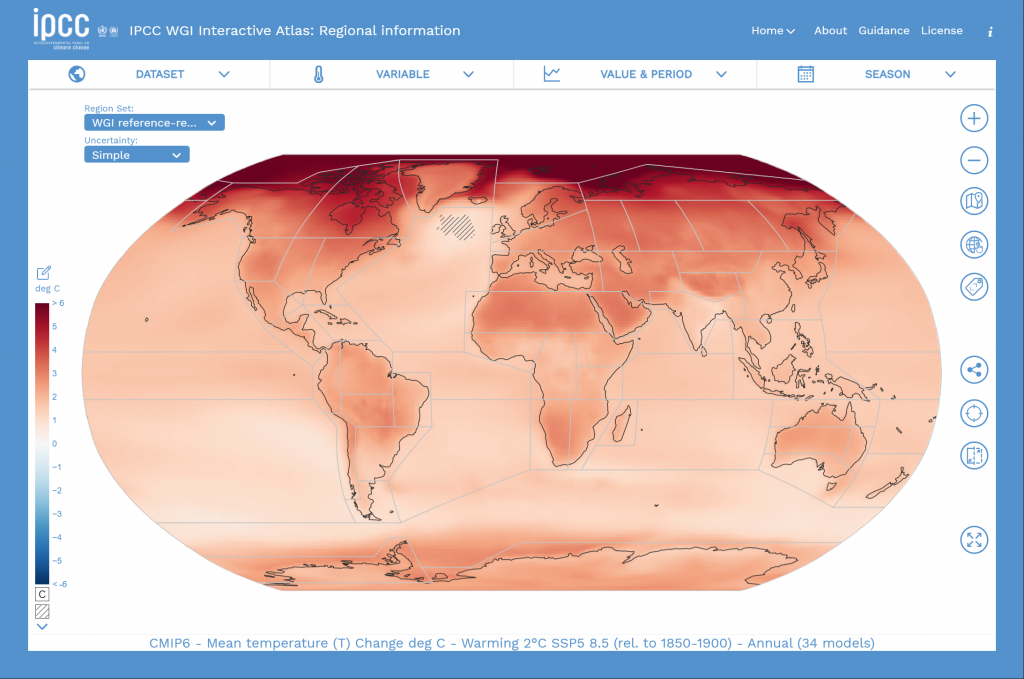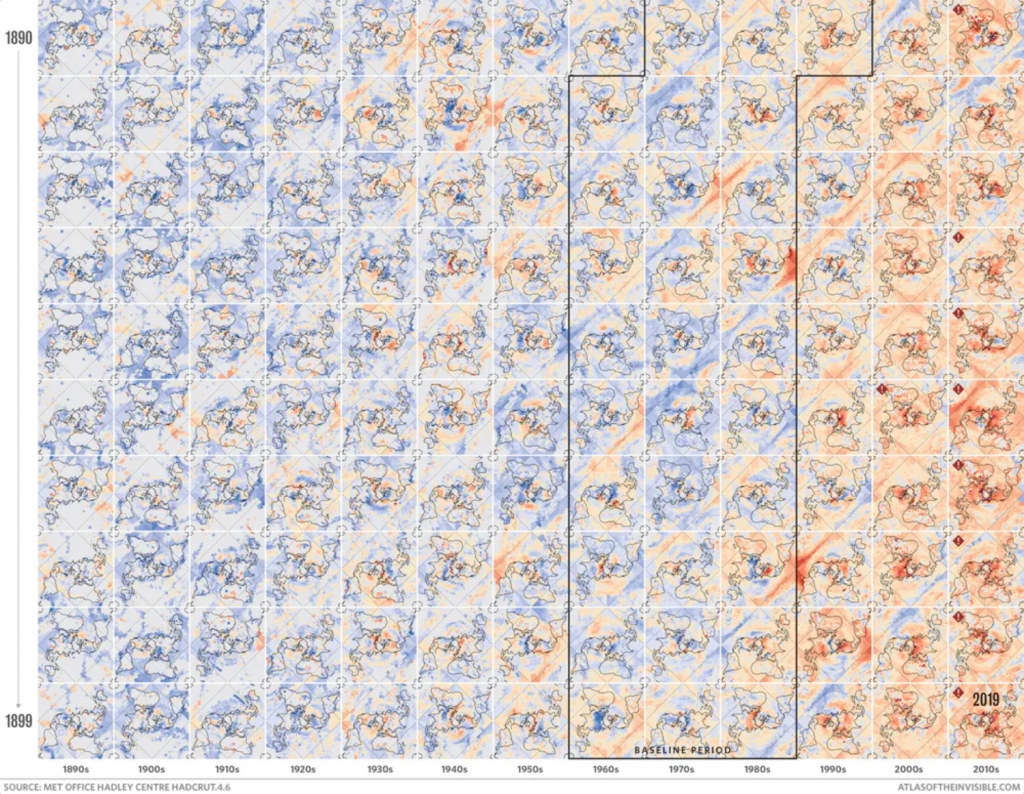My map of the week was going to be the interactive map on the Intergovernmental Panel on Climate Change (IPCC) web site. It’s a pretty solid example of where we’re at in terms of designing online maps as a portal for exploring data, and I felt it important to highlight it.

And then James Cheshire wrote an excellent article explaining why a more eye-catching approach to making maps of important issues is perhaps necessary. While the IPCC map is pretty good, James expertly articulates a major problem: how do you provide a single way to provide maps for an expert audience as well as a general audience? The short answer is you don’t.
I can interpret the IPCC map, but even someone well versed in reading and interpreting maps still struggles at the copious dropdowns of largely impenetrable variables and measures that can be viewed. How does a general audience relate to this? The short answer is they don’t.
And yet it is that audience that needs convincing in order to affect change.
So my map of the week is James’ example of developing an eye-catching way to communicate the issue of climate change to a general audience.

There’s a lot of excellent cartographic design in this map from the choice of the Peirce quincuncial projection to the gridded small multiples. In fact, the map is almost secondary to the message because if fades to the background. Against a baseline of measurements from 1961 to 1990 the tiles to the left are predominantly blue, and those to the right become fiery red. The arrangement of the maps creates the organising principle for the very simple message to become abundantly clear.
While there will always be sceptics, and those that deny the reality of climate change that the latest IPCC report clearly states, the sort of maps that James makes provide a much better, much clearer way of presenting science to a general audience. This is where the art of good cartography lies.
And I’m really looking forward to James’ and Oliver Uberti’s forthcoming new book Atlas of the Invisible from which this map is taken.